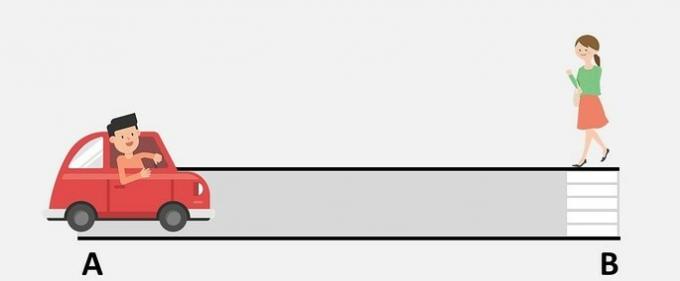The Uniformly Varied Rectilinear Movement (MRUV) is one that is performed in a straight line, which is why it is called straight. In addition, it has speed variation always at the same time intervals. Since it varies in the same way, which reveals constancy, the motion is called uniformly varied.
The straight path of this movement can occur horizontally or vertically. An example of this is a car traveling along a straight stretch of road or a rocket being launched into space.
In this way, the average of the acceleration is equal to its variation occurred in certain time intervals, which is known as instantaneous acceleration.
a = Δv / Δt → a = V - VO / t - tO → a = V - VO / t
From these calculations, the MRUV formula results:
V = VO + a. t
Where,
v: speed (m/s)
vO: initial speed (m/s)
The: acceleration (m/s2)
t: time(s)
Uniformly Accelerated Rectilinear Movement
Uniformly Accelerated Rectilinear Movement occurs when a body whose speed always increases at the same rate over time.
An example of this is starting a parked motorcycle (initial speed 0) and starting a route. The bike is constantly gaining speed, until it reaches the desired limit (different speed and far from zero).
Uniformly Delayed Rectilinear Movement
Uniformly Delayed Rectilinear Movement occurs when a moving body steadily slows down over time. In this case the acceleration will have a negative sign.
An example of this is a motorcycle that is moving (different speed and far from zero) and that has to decelerate when faced with a big traffic jam.
Your driver will be able to reduce speed steadily until reaching zero.
Read too:
- Uniform Movement
- Uniformly Varied Movement
- Uniform Rectilinear Movement
Exercises
1. (UFPR) In an international cycling competition, two of the cyclists, one French and, separated by a distance of 15 m in front of them, an Englishman, they move with equal speeds and constants of modulus 22 m/s.
Now consider that the Brazilian representative in the race, when overtaking the French cyclist, has a constant speed of 24 m/s module and starts a constant acceleration of 0.4 m/s module2, with the objective of overtaking the English cyclist and winning the race. By the time he passes the French cyclist, there is still 200 m to the finish line.
Based on these data and assuming that the English cyclist, when overtaken by the Brazilian, maintains the characteristics of his movement, mark the correct alternative for the time taken by the Brazilian cyclist to overtake the English cyclist and win the race.
a) 1 s
b) 2 s
c) 3 s
d) 4 s
e) 5 s
Alternative: e) 5 s
See also may be interested in: kinematics and Kinematics Exercises
2. (IFBA) The Beach park, located in Fortaleza – CE, is the largest water park in Latin America located on the seashore. One of its main attractions is a water slide called “Insano”. Descending this water slide, a person reaches its lowest part with a speed modulo 28 m/s. Considering the acceleration of gravity with modulus g = 10 m/s2 and disregarding friction, it is estimated that the height of the water slide, in meters, is:
a) 28
b) 274.4
c) 40
d) 2.86
e) 32
Alternative: c) 40
You may also be interested in:
- Kinematics Formulas
- Uniformly Varied Movement - Exercises
- Uniform Movement - Exercises



